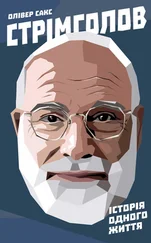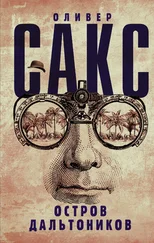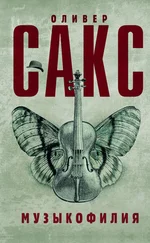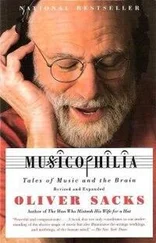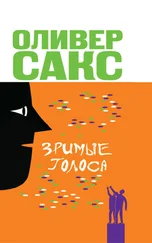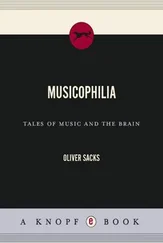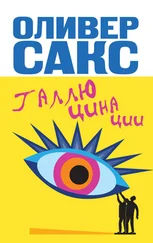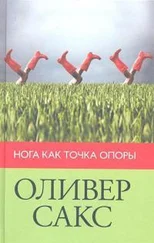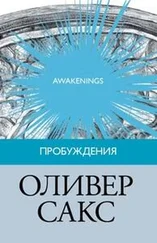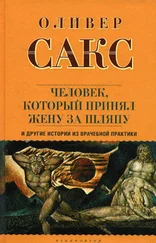My parents and my brothers had introduced me, even before the war, to some kitchen chemistry: pouring vinegar on a piece of chalk in a tumbler and watching it fizz, then pouring the heavy gas this produced, like an invisible cataract, over a candle flame, putting it out straightaway. Or taking red cabbage, pickled with vinegar, and adding household ammonia to neutralize it. This would lead to an amazing transformation, the juice going through all sorts of colors, from red to various shades of purple, to turquoise and blue, and finally to green.
After the war, with my new interest in minerals and colors, my brother David, who had grown some crystals when he did chemistry at school, showed me how to do this myself. He showed me how to make a supersaturated solution by dissolving a salt like alum or copper sulphate in very hot water and then letting it cool. One needed to hang something – a thread or a bit of metal – in the solution to start the process off. I did this first with a thread of wool in a copper sulphate solution, and in a few hours this produced a beautiful chain of bright blue crystals climbing along the thread.
But if I used an alum solution and a good seed crystal to start it off, I discovered, the crystal would grow evenly, on every face, giving me a single large, perfectly octahedral crystal of alum.
I later commandeered the kitchen table to make a ‘chemical garden’, sowing a syrupy solution of sodium silicate, or water-glass, with differently colored salts of iron and copper and chromium and manganese. This produced not crystals but twisted, plantlike growths in the water-glass, distending, budding, bursting, continually reshaping themselves before my eyes. [7] Thomas Mann provides a lovely description of silica gardens in Doctor Faustus : I shall never forget the sight. The vessel… was three-quarters full of slightly muddy water – that is, dilute water-glass – and from the sandy bottom there strove upwards a grotesque little landscape of variously coloured growths: a confused vegetation of blue, green, and brown shoots which reminded one of algae, mushrooms, attached polyps, also moss, then mussels, fruit pods, little trees or twigs from trees, here and there of limbs. It was the most remarkable sight I ever saw, and remarkable not so much for its appearance, strange and amazing though that was, as on account of its profoundly melancholy nature. For when Father Leverkuhn asked us what we thought of it and we timidly answered him that they might be plants: ‘No,’ he replied, ‘they are not, they only act that way. But do not think the less of them. Precisely because they do, because they try to as hard as they can, they are worthy of all respect.’
This sort of growth, David told me, was due to osmosis, the gelatinous silica of the water-glass acting as a ‘semipermeable membrane’, allowing water to be drawn in to the concentrated mineral solution inside it. Such processes, he said, were crucial in living organisms, though they occurred in the earth’s crust as well, and this reminded me of the gigantic nodular, kidneylike masses of hematite I had seen in the museum – the label said this was ‘kidney ore’ (though Marcus had once told me they were the fossilized kidneys of dinosaurs).
I enjoyed these experiments, and tried to envisage the processes that were going on, but I did not feel a real chemical passion – a desire to compound, to isolate, to decompose, to see substances changing, familiar ones disappearing and new ones in their stead – until I saw Uncle Dave’s lab and his passion for experiments of all kinds. Now I longed to have a lab of my own – not Uncle Dave’s bench, not the family kitchen, but a place where I could do chemical experiments undisturbed, by myself. As a start, I wanted to lay hands on cobaltite and niccolite, and compounds or minerals of manganese and molybdenum, of uranium and chromium – all those wonderful elements which were discovered in the eighteenth century. I wanted to pulverize them, treat them with acid, roast them, reduce them – whatever was necessary – so I could extract their metals myself. I knew, from looking through a chemical catalog at the factory, that one could buy these metals already purified, but it would be far more fun, far more exciting, I reckoned, to make them myself. This way, I would enter chemistry, start to discover it for myself, in much the same way as its first practitioners did – I would live the history of chemistry in myself.
And so I set up a little lab of my own at home. There was an unused back room I took over, originally a laundry room, which had running water and a sink and drain and various cupboards and shelves. Conveniently, this room led out to the garden, so that if I concocted something that caught fire, or boiled over, or emitted noxious fumes, I could rush outside with it and fling it on the lawn. The lawn soon developed charred and discolored patches, but this, my parents felt, was a small price to pay for my safety – their own, too, perhaps. But seeing occasional flaming globules rushing through the air, and the general turbulence and abandon with which I did things, they were alarmed, and urged me to plan experiments and to be prepared to deal with fires and explosions.
Uncle Dave advised me closely on the choice of apparatus – test tubes, flasks, graduated cylinders, funnels, pipettes, a Bunsen burner, crucibles, watch glasses, a platinum loop, a desiccator, a blowpipe, a retort, a range of spatulas, a balance. He advised me too on basic reagents – acids and alkalis, some of which he gave me from his own lab, along with a supply of stoppered bottles of all sizes, bottles of varied shapes and colors (dark green or brown for light-sensitive chemicals), with perfectly fitting ground-glass stoppers.
Every month or so, I stocked my lab with visits to a chemical supply house far out in Finchley, housed in a large shed set at a distance from its neighbors (who viewed it, I imagined, with a certain trepidation, as a place that might explode or exhale poisonous fumes at any moment). I would hoard my pocket money for weeks – occasionally one of my uncles, approving my secret passion, would slip me a half crown or so – and then take a succession of trains and buses to the shop.
I loved to browse through Griffin & Tatlock as one would browse through a bookshop. The cheaper chemicals were kept in huge stoppered urns of glass; the rarer, more costly substances were kept in smaller bottles behind the counter. Hydrofluoric acid – dangerous stuff, used for etching glass – could not be kept in glass, so it was sold in special small bottles made of gummy brown gutta-percha. Beneath the serried urns and bottles on the shelves were great carboys of acid – sulphuric, nitric, aqua regia; globular china bottles of mercury (seven pounds of this would fit into a bottle the size of a fist), and slabs and ingots of the commoner metals. The shopkeepers soon got to know me – an intense and rather undersized schoolboy, clutching his pocket money, spending hours amid the jars and bottles – and though they would warn me now and then, ‘Go easy with that one!’ they always let me have what I wished.
* * *
My first taste was for the spectacular – the frothings, the incandescences, the stinks and the bangs, which almost define a first entry into chemistry. One of my guides was J.J. Griffin’s Chemical Recreations , an 1850ish book I had found in a secondhand bookshop. Griffin had an easy, practical, and above all playful style; chemistry was clearly fun for him, and he made it fun for his readers, readers who must often have been, I decided, boys like myself, for he had sections like ‘Chemistry for the Holidays’ – this included the ‘Volatile Plum Pudding’ (‘when the cover is removed… it leaves its dish and rises to the ceiling’), ‘A Fountain of Fire’ (using phosphorus – ’the operator must take care not to burn himself’), and ‘Brilliant Deflagration’ (here, too, one was warned to ‘remove your hand instantly’). I was amused by the mention of a special formula (sodium tungstate) to render ladies’ dresses and curtains incombustible – were fires that common in Victorian times? – and used it to fireproof a handkerchief for myself.
Читать дальше

